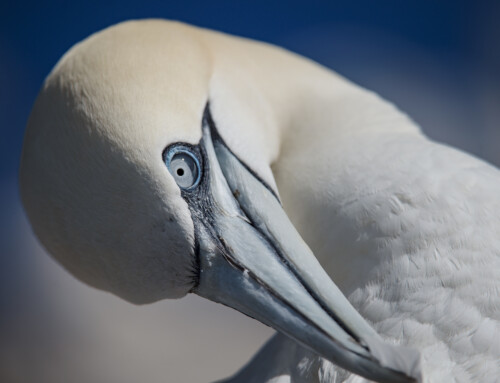LINKED PAPER
A large‐scale survey of bird plumage colour aberrations reveals a collection bias in Internet‐mined photographs. Zbyryt, A., Mikula, P., Ciach, M., Morelli, F., & Tryjanowski, P. 2020. IBIS. DOI: 10.1111/ibi.12872. VIEW
Birds are among the most colourful animals, rivalled only by fishes and insects. The astounding diversity of colours and patterns in bird feathers are largely formed from pigments, mainly of two types: melanins which are responsible for brown, grey and black colours and carotenoids which produce red or yellow colours. The usual pigment-based plumage appearance is a result of chemical and physiological processes. However, imperfect pigment synthesis or deposition can change a bird’s appearance dramatically. While quite rare, colour aberrations do occur on a regular basis in birds.
Despite long-term interest in this phenomenon, there are a lot of unknowns, including the question of whether, and if true, why bird populations, species and lineages differ in their prevalence of colour aberrations. A good source of such comparative data could be museums, which have accumulated atypically coloured specimens over long time periods; unfortunately, it is often complicated to have access to the stored specimens and museum collections often exhibit a strong sampling bias toward preferred species and individuals. Hence, we attempted to explore another potential source of such data; online digital data. Digital data, such as photographs or videos, are accumulating at unprecedented rates, and are increasingly used to provide insights into the natural world. They can significantly increase effectiveness of data collection, but these data may again be prone to systematic collection bias.

In our study, we used photographs from Google Images and an online survey of Polish birdwatchers and ornithologists and asked whether the number of colour aberrations reported for each bird species occurring in Poland correlates with life-history and ecological traits related to the detectability of that species, or to its “charisma” in human terms. The predictors considered were body size (larger species are easier to observe and more popular), migratory behaviour (bird migration and especially long-distance migrants attract high public attention), occurrence in human settlements (most birdwatching is conducted in or near houses), habitat type (birds in open areas are more easy to detect than birds in densely vegetated habitats), habitat breadth (generalist species are widespread and often locally abundant) and diet type (some foraging guilds can receive higher attention than other guilds). We also controlled our analyses for different population sizes among species.
Altogether, we collected 936 images of 74 species depicting aberrantly coloured individuals. However, we excluded species with less than 1000 breeding pairs in Poland and species renowned for high plumage colour polymorphism and melanistic morphs. In final analyses, we included 57 bird species where at least one colour aberration was reported (825 images) and 113 species with no colour aberration reported. Although colour aberrations of several types, differing in causal mechanisms and phenotypic appearance, occur in birds, for practical reasons (tricky identification and general rarity of several types), we pooled all aberration types for the main analyses.

Despite their wide distribution across the phylogenetic tree, colour aberrations were more prevalent in some lineages than others (e.g. in passerines, ducks, geese and swans). Our models controlling for the effect of phylogeny revealed that the reported number of colour aberrations increased with species population size, body mass, and presence in human settlements. Species with a higher number of reported colour aberrations were also those migrating over long distances and having wider habitat breadth. Diet type and, interestingly, also habitat openness played only a very weak or nonsignificant role. Our predictors explained a fair proportion of variance in the number of colour aberrations across Polish birds, but some species, including, for example, Western Jackdaw Corvus monedula, Common Blackbird Turdus merula or Sparrows Passer spp., still exhibited extraordinarily high residual values of colour aberrations. This indicates that despite a noticeable collection bias, high prevalence of colour aberrations in some species and lineages may be biologically driven.
Our study is among the first which explicitly tested the effect of species traits on the reporting rate of plumage colour aberrations in birds, revealing that collection bias might be pervasive. Further studies on genetic and ecological drivers of colour aberration patterns across bird individuals, populations and species can help us to properly understand the relative role of collection bias and causal factors. Our study not only highlights the strength of digital data in the rapid and effective collection of information on relatively rare natural phenomena but also points to the potential pitfalls linked to this data type.
References
Zbyryt, A., Mikula, P., Ciach, M., Morelli, F., & Tryjanowski, P. 2020. A large‐scale survey of bird plumage colour aberrations reveals a collection bias in Internet‐mined photographs. DOI: 10.1111/ibi.12872. VIEW
Image credit
Top right: Red-backed Shrike, Lanius collurio © Sławomir Młynarski



